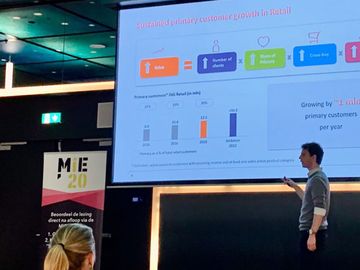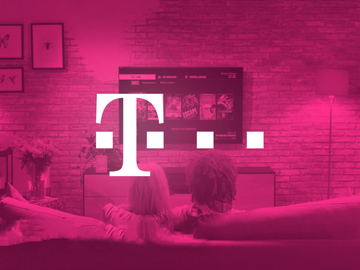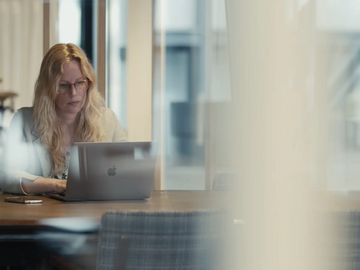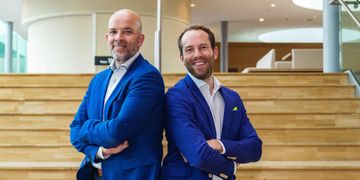
Dorkas Koenen & Jeroen Lausberg (Rabobank): “By definition, marketers have too little customer contact”
In the eyes of potential customers, Rabobank is the best in WUA’s study of online orientation on a mortgage in the Dutch market (publication in Dutch). In this interview, a chat with Jeroen Lausberg, Lead marketing manager and Dorkas Koenen, CMO. About marketers who need to think digital 100%, the importance of clock speed, agile working, and data-driven customer validation.
Dorkas Koenen and Jeroen Lausberg, congratulations on winning this WUA study. How important is it for you to be the best in the digital arena? What is the role of having a winning mentality in this?
Jeroen Lausberg (JL): “Last year we also won this study, then for half a year we didn’t, but fortunately we did know what we needed to improve on. It may sound overly confident, but I really believed that we would win again this year. So, this winning mentality is definitely there for me and the team.
“If we win an award or are at the top of a study, we often get many positive reactions from all over the country. And also from local bank employees who are proud that we managed to achieve this. These are sometimes colleagues you won’t always get to see or talk to, but they also get wind of it and take pride in it. That is also a nice example of a winning mentality!”
Dorkas Koenen (DK): “At Rabobank, we work in agile teams where people have an increasing feeling of responsibility for the targets and objectives that they have, and where people really want to be part of a winning team. That is beautiful: ownership has come into play. A winning mentality in itself is very important, I think, but it is not enough. What I find important, is the combination of winning and clock speed. So, the speed of action, speed of improvement, speed of steering, that’s what needs to get better and better, especially in the digital world.
“Because: many marketers come up with beautiful ideas and have opinions, but it often takes far too long before good plans actually become a reality. We were in second place, and now we’re back at the top. As an organization, we’ve had the clock speed to actually improve the things we knew we needed to improve on. I think that might just be the nicest example of a winning mentality!”
What is your approach, what is going so well? What can other digital leaders learn from your approach and digital organization?
JL: “Our span of control has increased a lot since we started working in an agile manner. Within your team you have the various disciplines. Previously, responsibilities were scattered across different departments, so you would have to organize a project group in order to gain speed. But now, if you have a certain customer insight, we can apply it immediately.
“In addition to agile working and gaining speed, we have also made great strides in the area of qualitative customer research in combination with data-driven analyses. We’re getting increasingly good at knowing what really drives customers, and insights are applied immediately. Our proposition ‘Hypotheek-Binnen-1-Week’ (‘Mortgage-Within-1-Week’) is an example of this. Research has shown us that customers want security, and mainly: they want it quickly. The property market has been booming again in the Randstad, buying a house needs to happen quickly, plus: buying or selling a home has always been an emotional rollercoaster anyway. Speed in combination with security, that is the core of our proposition, and we learned this through customer research.”
For more interviews like this download the free ebook The Digital Excellence Challenge. >>
DK: “There is a great difference between the voice of the customer and what the customer really wants, i.e. customer need. The voice of the customer might be: ‘I want it quickly’. But the customer need might be: ‘I want security’. Marketing used to be able to act on the voice of the customer, what the customer communicated to us was what you would start doing, and all would be well. The world has changed since then: we need to act on customer need. And sometimes this is hidden behind the voice of the customer. For the ‘Hypotheek-Binnen-1-Week’ proposition we used a lot of resources to ensure that we didn’t keep riding off a manifest customer need. We also really addressed the needs that lie underneath.”
From a consumer perspective, there shouldn’t be a difference (anymore) between service and sales. Are you able to break through the silos at Rabobank, or: are you planning to do so?
JL: “The lines are definitely blurred, especially since the reorganization from October 1st. An example: as a lead marketer, I am now responsible for the target audience of homeowners. Service is a very important component in this. If you’re good at answering questions or resolving problems online, there will be more room for commerce.”
DK: “I recognize the question, but I find it difficult to answer from the customer’s perspective. The customer doesn’t call Rabobank sales or Rabobank service. They call Rabobank. Organizations are sometimes organized into service or sales processes, because after all, you need to be able to give people a certain task. So, there is always an external and internal component to this question. But with the current agile organization, we’re showing that we are very much able to create a good customer service that overarches sales and service.
“Marketers should always think from the customer’s perspective. Not only address customer need, but also the underlying customer problem and bring them together into a single, overall customer philosophy. Our role in the organization is to make this customer philosophy clearly visible. The customer philosophy needs to be implemented everywhere, whether it be in sales, in service, anywhere. I think that’s a very nice task for marketing: to string these various disciplines together. And then marketing needs to have the strength and activation, the power and the content, to actually start doing this.”
“My assertion is that by definition, marketers have too little customer contact. Listening in on the call centre is good. But that should never be the only source a marketer uses to inform themselves about what customers are doing. Marketing should be the ultimate representation of customer perspective in the organization, and this doesn’t always go well. Because the average level of education in The Netherlands is MBO, there is an immediate mismatch between the level of education of the average Dutchman and that of the marketer. Additionally, half of the marketers live in an urban agglomeration, and maybe half of those people live in Amsterdam. There are quite a few Dutch people who do not live in Amsterdam… One of the greatest dangers is marketers believing that they are customer oriented because they feel that something suits their environment. That’s why I always say it’s about fact-based validation… whether a marketer thinks something is good or bad actually doesn’t tell me much.”
What is the role of customer research and customer focus in your daily work and in the teams you are responsible for?
DK: “It concerns data, insights and validation. And this trinity is something that must be used continuously. In practice, I see that marketers take too little time for customer research, and I think that marketers of the future will need to invest more and more in customer validation. The interesting thing is that the amount of tooling for this is increasing. Change a customer journey for three days if you have to, and see what happens. You can in fact do a lot of customer validation, and you can indeed test a lot!”
“Marketing becomes much more of a co-creator rather than a creator. In the past, marketing was a problem, and you would resolve this problem for the customer. Now, marketing is a problem, and we need to try to resolve this problem together with the customer and customer insights.”
JL: “Yes. Fact-based decision making in combination with insights, this is the most important thing to work on, on a daily basis. In the past, for a number of journeys, we had a good understanding of the drivers behind why customers choose us or not. But continuous validation, testing, and deeper knowledge of what happens behind a complaint or question, throughout the entire journey, that’s a very large and broad task.”
DK: “As Rabobank, we need to increase our field of vision from marketing to ensure that we can successfully implement customer insights in the organization. Then it becomes incidentally structural, then it is not only a capability of the marketing organization, capability of everyone. So, marketing is not a department, marketing is a discipline the entire organization must have. And the marketing department ensures that this discipline develops and continuously matures throughout the organization in a positive way.”
What KPIs do you use for digital, which knobs do you usually twist in order to excel digitally?
DK: “NPS is our main KPI from a marketing perspective. I think that’s nothing new, it’s even in the strategic framework of our Board of Directors.”
JL: “With NPS, you look at customer experience, and based on customer feedback you can gather points for improvement with this KPI, organization-wide. What we also look at a lot, is conversion. And we measure our brand image and brand mentality. These are factors you take into account and utilize as a marketer.”
DK: “A marketer should excel in three fields: do I create a good customer experience based on the right customer philosophy, am I effective when it comes to sales, and does what I do contribute to my brand? The KPIs are always aligned based on those elements. A marketer must create an experience around a customer need, his work must eventually yield something, and if it yields something but it doesn’t contribute to the brand, then the marketer has not done his job well enough. So the latter component: how do the experience and effectiveness in sales contribute to the brand image, is a KPI that is often forgotten, I think. Then people say: “But aren’t we doing a campaign for the brand?” No! Everything you do has an impact on your brand experience, so you have to take into account the way in which you optimize a customer journey, for example.
“Increasingly, marketing isn’t about sales, but about nurturing, capturing, and binding the customer base you already have. If you create more experience, people will automatically buy more from you. So, people who already have a relationship with you, for them you need to keep creating experience too, otherwise they will end up buying the product from someone else. I think customer experience is important to retain customer loyalty. The better the customer experience, the more impact you have.”
What are your biggest digital challenges for 2017?
DK: “Every company has two major digital challenges from a marketing perspective: the first is to allow marketers to work in a digital world. A lot of current marketers, between the ages of 25 and 35, went to school and grew up when the world was not yet fully digital. Large customer groups who are going to come to us will already be fully digital. A marketer’s first reflex should be digital. In the end, it should be possible to fully automate marketing.
For more interviews like this download the free ebook The Digital Excellence Challenge. >>
“There’s the bridge to the second challenge. If you want to be able to fully automate marketing, as an organization you’ll need a digital brain. That is, people, or teams, who will be linking data profiles to propositions, and who will push those propositions towards customers through relevant media and channels. The big challenge involved isn’t so much ‘how do you create the infrastructure component of the digital brain’. That is often more of an IT challenge. The challenge is: ‘how do I as a marketer program this digital brain in such a way that the digital brain of my organization works differently’, i.e. is distinct from competitors 2, 3, 4, and 5.
“Creating distinction is becoming more and more important, because companies are increasingly using the same tooling. All the tools that exist, your neighbour has at his disposal too. Every large company is working with a digital brain, so the fact that you have it no longer distinguishes you from the rest. The fact that it will in the end work is no longer distinctive either. But what is still distinctive, is: how do you allow it to work? And what propositions do you put into that digital brain?”
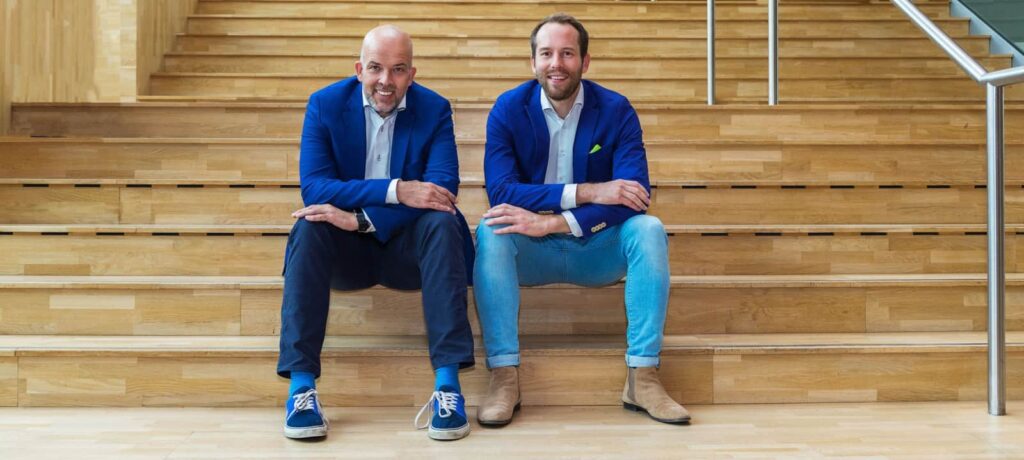
What digital innovations are you currently working on, and what developments are on your roadmap?
DK: “I am really impressed with the digital innovations we’ve got at Rabobank. Tellow is a very interesting example of an innovation that allows you to immediately file a tax return as an entrepreneur using an app. Tellow really is a very beautiful platform. Then the challenge for marketing is to make Tellow relevant, and link it to a concrete customer need. And in that, the campaign has been very successful.”
What do you think will be The Next Big Thing in digital in your market?
DK: “Artificial Intelligence. So, all that is going to learn. What will learn for you. Machine learning, but actually all forms of AI are becoming very big. Machines will be able to do things better than people. And that is very important in marketing and digital. I was in Silicon Valley two years ago, and there they already had a computer I could ask questions to. The more often you talk to it, the better it learns from you. These are developments that we must really understand from a marketing perspective. AI is really the next revolution in the marketing world!”
What is your ultimate goal and dream in the business area?
JL: “From a marketing perspective, especially in digital, my ultimate dream has to do with the digital brain and AI. Knowing what works with a certain customer without having to do very much to get this knowledge. Automated, but with a certain form of direction. The cool thing is that, from data, you are being inspired about what actually happens and what works without ever having to think (or have thought) of it beforehand. If you can do that, I think you’re doing beautiful things that are relevant to customers.”
DK: “What is my ultimate dream? I would like it very much if Rabobank has a recognizable customer philosophy that gets back to our customers everywhere. Only then we’ll have succeeded, I think. I believe that a bank must also work from a very clear customer philosophy. And yes, I’m thinking of a company like Coolblue with the ‘Anything for a smile’ promise that has been implemented everywhere. Coolblue is, of course, a much less complex organization than a bank. They simply sell products from a shelf to the customer. To us, as Rabobank, the challenge is to define a customer philosophy that addresses a real customer problem with social impact, so no functional need, which at the same time is very concrete and tangible.”
